
10 Simple Seated Back Stretches at Your Office Chair
Table of Contents
Out of all the things office workers share in common, back pain is probably the most common. Back stretches while sitting can help! When sitting in an office chair the entire day, it is no surprise that you are bound to experience lower back pain. With the correct ergonomic office chair with back support, you can reduce the probability of this. However, for those who find it challenging to cope, here are 10 simple chair exercises for lower back pain you can do in the office.
Ultimately, you should use a chair with lumbar support as it has various health benefits associated with it. If you are finding it challenging to concentrate or perform adequately in the office, it may be time to switch up your chair to an ergonomic chair for back pain.
What is an Ergonomic Chair?
An ergonomic office chair is designed to support the natural curves of the spine, promote healthy posture, and reduce strain on the body during extended sitting periods. Unlike traditional office chairs, ergonomic chairs have:
- Adjustable lumbar support to maintain the natural curve of the lower back.
- Seat height and depth adjustments to ensure feet rest flat on the ground.
- Reclining mechanisms to reduce pressure on the lower back.
- Adjustable armrests to support the shoulders and prevent slouching.
Sitting for long hours—regardless of how supportive your chair is—can tighten muscles and lead to lower back pain. This is why seated back exercises are essential for keeping your back flexible and pain-free.
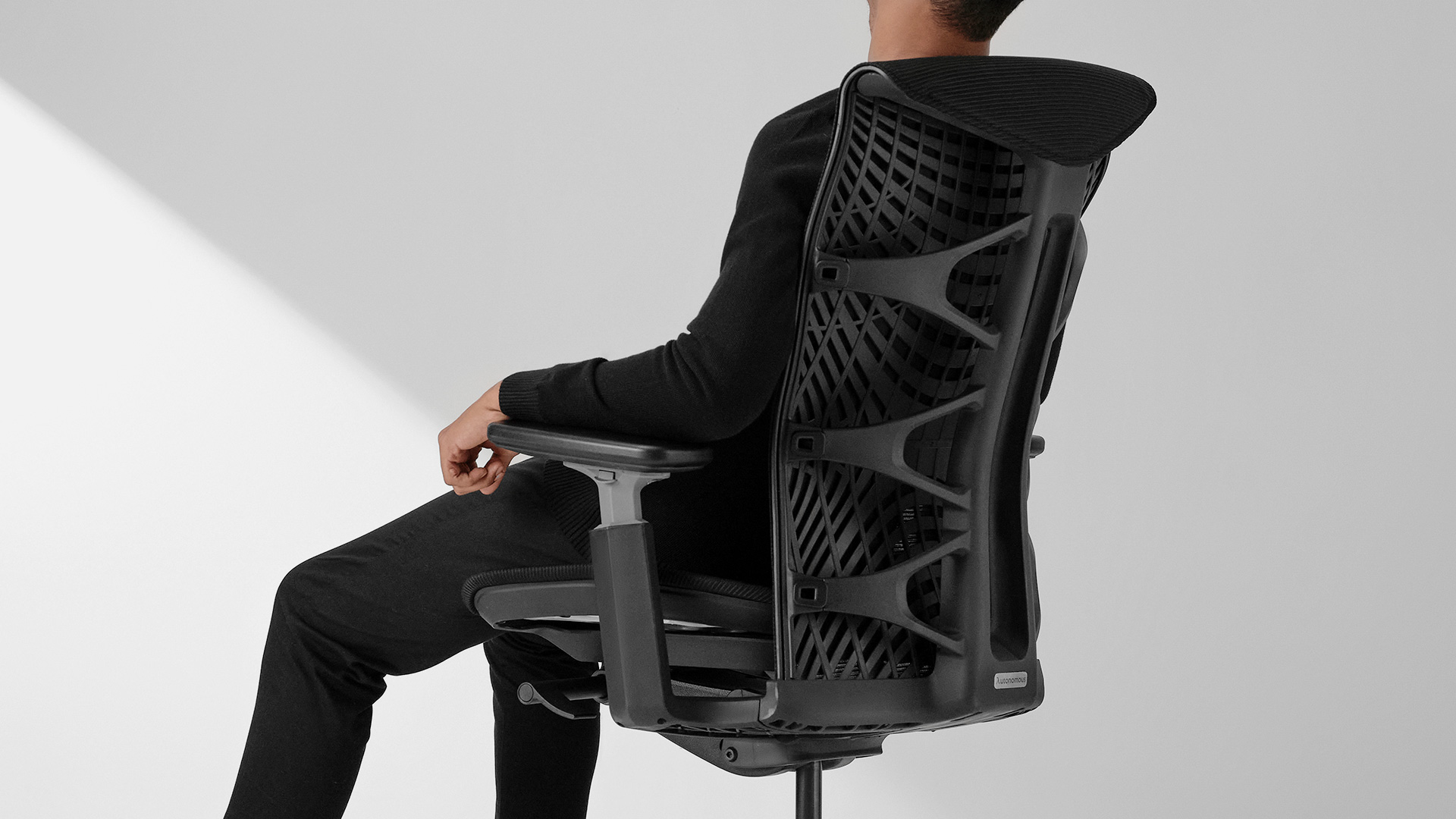
The Advantages of an Ergonomic Chair
The benefits include:
Reduced pain throughout the body – including neck and back pain.
Increased energy levels, motivation, and productivity.
These chairs help to maintain the correct posture.
Ergonomic chairs can be completely customized to suit your body shape and type.
The Disadvantages of an Ergonomic Chair
The disadvantages include:
These chairs are relatively expensive.
The majority of these products require self-assembly.
10 Simple Seated Back Stretches at Your Office Chair
The 10 simple seated lower back stretches exercises at chairs you can attempt to relieve any pain include:
1. Abdominal Bracing
Start with your hands on your lower abdominal muscles in a seated position. Draw your navel to your spine with a steady, relaxed movement while bracing your abs. Hold for a moment, then let go.

2. Seated Marches with Abdominal Bracing
Continue to sit in your seat with an upright position and abs braced by pulling the navel to the spine while doing the activity.
As you raise one leg off the floor, drop it back down, and alternate with your other leg, keep your knees bent.
3. Seated Forward Flexion Stretch
Start by sitting in your seat with your feet shoulder-width apart on the floor.
Lean over as much as you can while keeping your back straight. Your arms should be dangling near the ground.
4. Seated Figure Four Stretch
Lift one of your feet and place it on your opposite knee when sitting straight in your chair with your feet on the floor.
Gently bend forward until you notice a stretch. Maintain this good posture by keeping your back upright.
5. Seated Knee to Opposite Shoulder
Place your feet on the floor and sit straight in your seat. Cross one leg over the other leg so that your foot is resting on your thigh on the opposite side.
Maintain an upright back as you pull the raised knee to your body to the opposite shoulder.
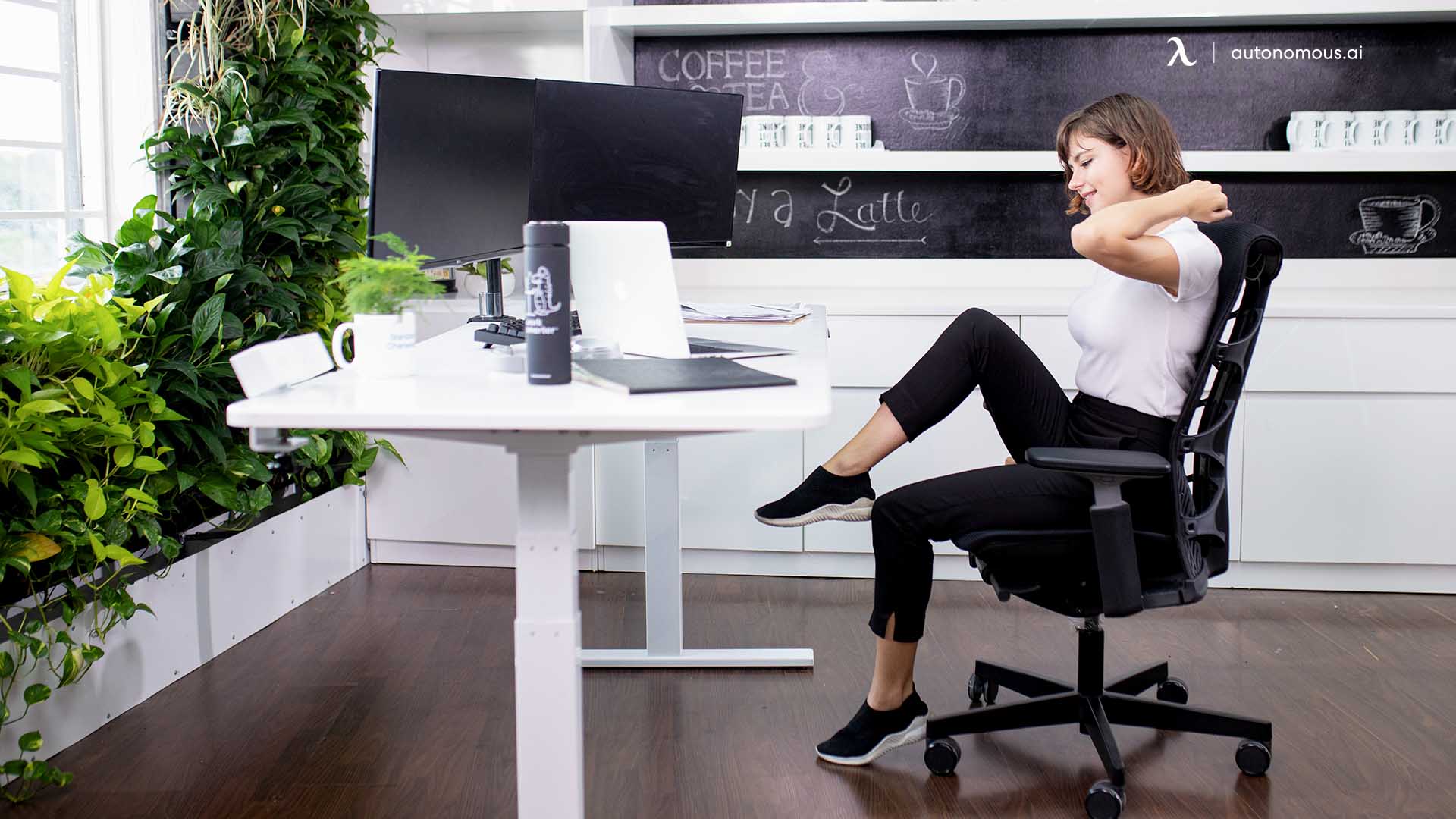
6. Spinal Twist
Keep your feet firmly on the ground and your hands on the armrest of the seat. Gently twist to the right after that. Stop when you reach your limit and take several deep breaths. In this pose, remember to keep your back upright and your hips facing forwards. Stay in this position for 10 to 30 seconds before switching sides.
7. Small Spinal Roll
This is a condensed version of a standing spinal roll. Sit in your chair with your back straight and both feet on the ground. Then begin rolling down your spine, beginning at the top of your head. Fold the vertebrae one by one before you cannot any longer. You are free to rest in any position that is convenient for you. It does not matter if it is your knee, the ground, or the middle of your torso.
Then begin to roll back until you reach your starting point. Rep a few times more. The pain can become more intense during this exercise, but once you return to a straight stance, the muscles may feel comfortable.
8. Sitting Back Stretch
Adjust your chair to be a little farther away from the table. Keep your feet firmly planted on the ground and your hands on the disk's surface. Inhale deeply, then lower your chest between your arms when you exhale. If you do not feel stretched enough, lower your chest even further. Return to the initial place after a few breaths. Repeat until the muscles are fully relaxed.
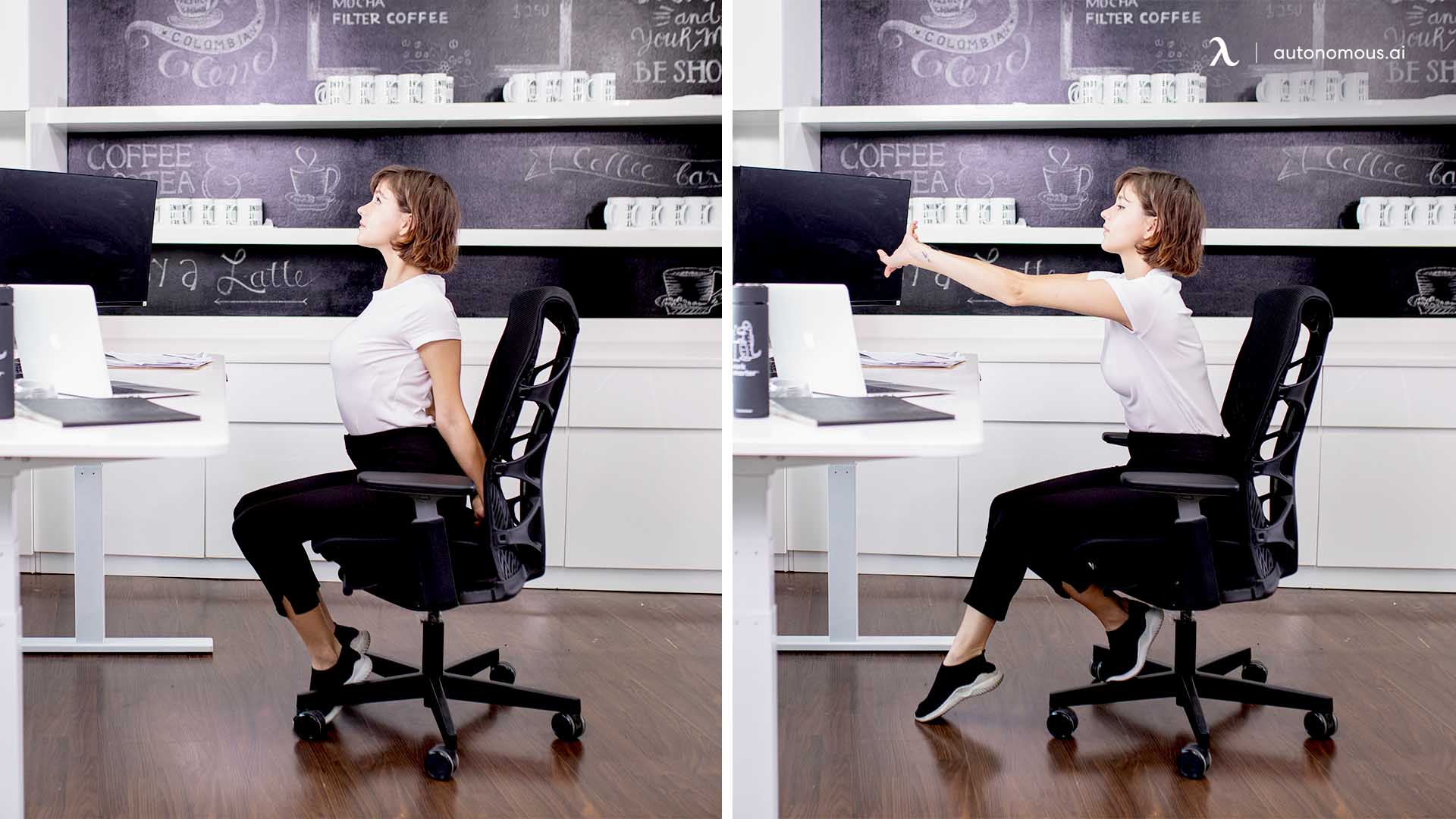
9. Torso Stretch
This exercise stretches out your entire back and is extremely quick to do. You should do it if you are stiff.
Intertwine your hands and lift them above your head. Start to shift as if you are attempting to get to the sky. In this location, take a deep breath, then release your hands and place them down. You can practice this activity a total of ten times.
You can keep your hands up for more than one breath if you like. Softly move to the left and the right side to get a deeper stretch.
10. Spinal Roll
This exercise is basic and effective for relieving lower lumbar pain and releasing muscle tension. Stand tall with your feet firmly planted on the ground. Then go back to the small spinal roll point and repeat the procedure.
The Best Ergonomic Options for Office Workers
Finding the right ergonomic chair can make a significant difference in comfort, productivity, and long-term back health—especially for office workers who spend hours sitting at their desks. The Autonomous ErgoChair series is designed to offer top-tier adjustability, lumbar support, and breathability, making it one of the best ergonomic chair options for professionals looking for both functionality and style.
We’ll take a detailed look at the three standout models in the ErgoChair lineup:
1. ErgoChair Pro – Best for Full Adjustability
The ErgoChair Pro is an all-around excellent ergonomic chair that offers exceptional adjustability, making it perfect for office workers who want a personalized sitting experience. Whether you need lumbar support, reclining flexibility, or adjustable armrests, this chair has it all.
- Fully Adjustable Design – You can tweak seat height, armrests, lumbar support, tilt, and recline to find your perfect position.
- Reclining Feature with Tilt Lock – The 22° recline range supports dynamic sitting, letting you switch between upright focus mode and relaxed lean-back mode.
- Breathable Mesh Back – Keeps airflow circulating, preventing overheating during long work hours.
- Weight Capacity of 300 lbs – Ensures stability and durability for a wide range of users.
If you need a chair that adapts to your posture, the ErgoChair Pro’s extensive adjustability ensures you get the perfect fit. It’s especially useful for people who experience lower back discomfort, as the customizable lumbar support reduces strain on the spine.
/https://storage.googleapis.com/s3-autonomous-upgrade-3/production/ecm/240715/1(1).jpg)
Autonomous ErgoChair Pro
| Dimensions | 29”L x 29”W x 46” - 50”H |
|---|---|
| Seat dimensions | 20”L x 20”W |
| Seat height | 18” - 20” |
| Back dimensions (w/o headrest) | 21”W x 22”H |
| Back dimensions (with headrest) | 21”W x 28” - 31”H |
| Tilt range | 22° |
| Armrest height | 11” - 14” |
| Armrest height (from the floor) | 26.7” - 32.2” |
| Caster wheel diameter | 2.36 inches |
| Number of caster wheels | 5 pieces |
| Materials | Polyester fabric with molded foam interior and durable nylon plastic frame; PU handrest pads. |
| Colors | Cool Gray, Evergreen, All Black Red Apple, Black & White, Baby Blue |
| Weight capacity | 300 lbs |
| Item weight | 48.5 lbs |
| Shipping dimensions | 29”L x 27”W x 19”H x 67 lbs |
| Assembly required | Yes |
| Warranty | 2 years |
| Free returns | 30 days The trial and return policy does NOT apply to products on sale. |
| Adjustability | Headrest, armrest, back tilt angle and tension, seat tilt and height. |
2. ErgoChair Ultra 2 – Best for Advanced Dynamic Support
For those who need next-level lumbar support and flexibility, the ErgoChair Ultra 2 is the most advanced chair in the Autonomous lineup. It’s designed with a dynamic, self-adjusting backrest, meaning it responds to your movement and keeps your spine aligned naturally—perfect for long hours at a desk.
- Dynamic Lumbar Support – The chair automatically adjusts to your lower back, providing continuous support no matter how you move.
- Adaptive Movement – Unlike traditional office chairs, the Ultra 2’s flexible backrest moves with you in all directions, ensuring seamless transitions between sitting postures.
- Enhanced Reclining System – The tilt mechanism allows for a smooth recline, making it easier to shift between focus work and relaxation.
- Wide, Comfortable Seat with Soft Cushioning – Provides plush comfort while maintaining a sleek, professional design.
If you want a chair that moves with you rather than forcing you into one position, the ErgoChair Ultra 2’s dynamic lumbar support is game-changing. This is particularly beneficial for workers who alternate between sitting upright, leaning forward, and reclining throughout the day.
/https://storage.googleapis.com/s3-autonomous-upgrade-3/production/ecm/241004/1(2).jpg)
ErgoChair Ultra 2
| Dimensions (w/o headrest) | 28”L x 28”W x 41” - 46”H |
|---|---|
| Dimensions (with headrest) | 28”L x 28”W x 49” - 58”H |
| Seat dimensions | 18”L x 18”W |
| Seat depth range | 18” - 20.5” |
| Seat height | 18” - 23” |
| Headrest | 8" - 12" |
| Back dimensions | 20”W x 23”H |
| Tilt range | 25° |
| Armrest height | 7” - 11” |
| Armrest height (from the floor) | 23.5” - 27.7” |
| Caster wheel diameter | 2.56 inches |
| Number of caster wheels | 5 pieces |
| Materials | 100% TPE and polyester fabric upholstery with ABS plastic frame, aluminium base |
| Colors | Onyx Black, Dover Gray |
| Weight capacity | 320 lbs |
| Item weight | 36.5 lbs |
| Shipping dimensions | 28”L x 17”W x 31”H x 45 lbs |
| Assembly required | Yes |
| Warranty | 2 years |
| Free returns | 30 days |
| Adjustability | Headrest, armrest, back tilt angle and tension, seat height. |
3. ErgoChair Mesh – Best Budget-Friendly Ergonomic Chair
For those looking for a mesh ergonomic chair that still provides essential comfort and breathability, the ErgoChair Mesh is a fantastic choice. It delivers good lumbar support, an airy mesh back, and a simple, lightweight design, making it ideal for smaller office spaces or budget-conscious buyers.
- Breathable Mesh Back – Perfect for hot environments or long work sessions, as it keeps air flowing and prevents heat buildup.
- Ergonomic Lumbar Support – While not as dynamic as the Ultra 2, the adjustable lower back support helps maintain good posture.
- Reclining Functionality – Allows for gentle tilting, supporting a relaxed working posture when needed.
If you work in a warm office or need an ergonomic chair without spending a fortune, the ErgoChair Mesh offers a balance of affordability, breathability, and comfort.
.webp)
ErgoChair Mesh
| Dimensions | 28.5”L x 28.5”W x 45.5” - 52”H |
|---|---|
| Seat dimensions | 19”L x 19”W |
| Seat depth range | 18” - 20” |
| Seat height | 18.5” - 21.5” |
| Back dimensions (w/o headrest) | 21”W x 22”H |
| Back dimensions (with headrest) | 21”W x 28” - 31”H |
| Tilt range | 22° |
| Armrest height | 11” - 14” |
| Armrest height (from the floor) | 26.7” - 32.2” |
| Caster wheel diameter | 2.36 inches |
| Number of caster wheels | 5 pieces |
| Materials | Special German mesh (72% polyester, 28% polyamide) |
| Colors | Cool Gray, Black |
| Weight capacity | 300 lbs |
| Item weight | 48.5 lbs |
The Final Verdict
If you have had enough of the stiffness and tension, it is time for you to buy an ergonomic chair. It all comes down to ergonomics. Learn how to better set up your workspace to avoid pain before it begins. Have you ever considered switching to a standing desk? An ergonomic office chair and standing desk could be the solution to all of your problems.
In the meantime, it may be helpful to attempt the various back stretches for back pain options.
Stay connected with us!
Subscribe to our weekly updates to stay in the loop about our latest innovations and community news!
Interested in a Link Placement?
Spread the word
.svg)
.svg)


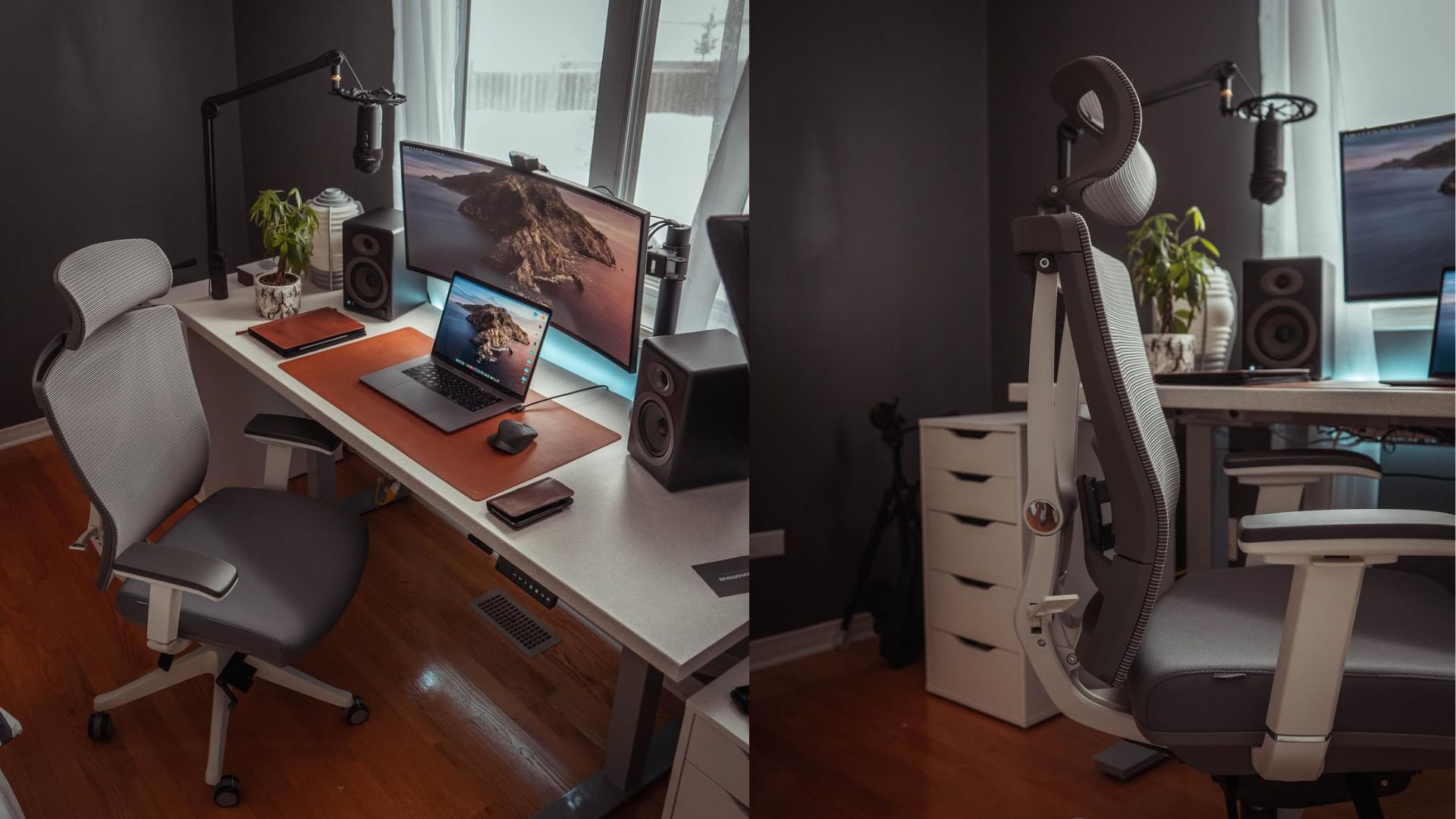
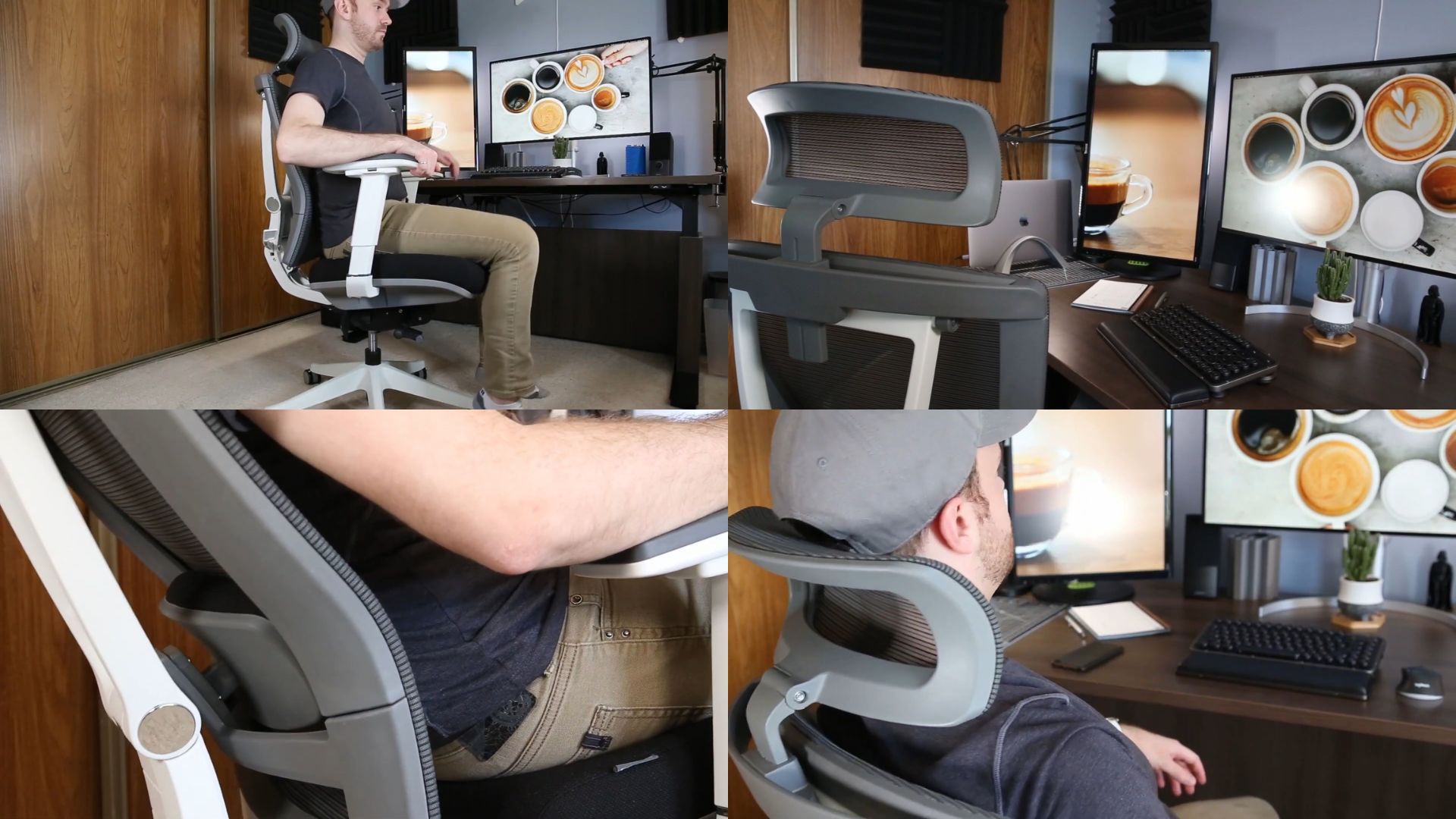
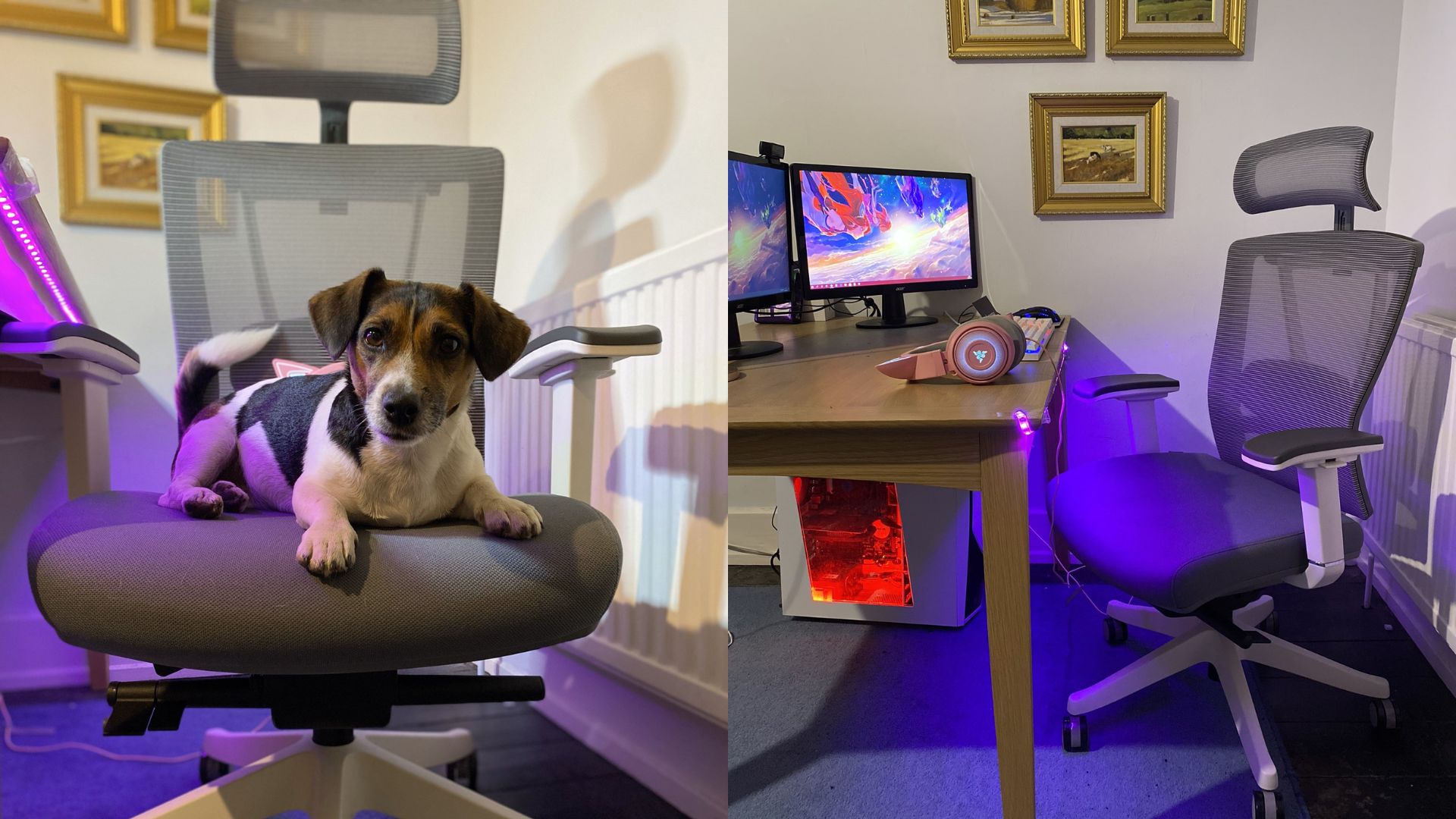
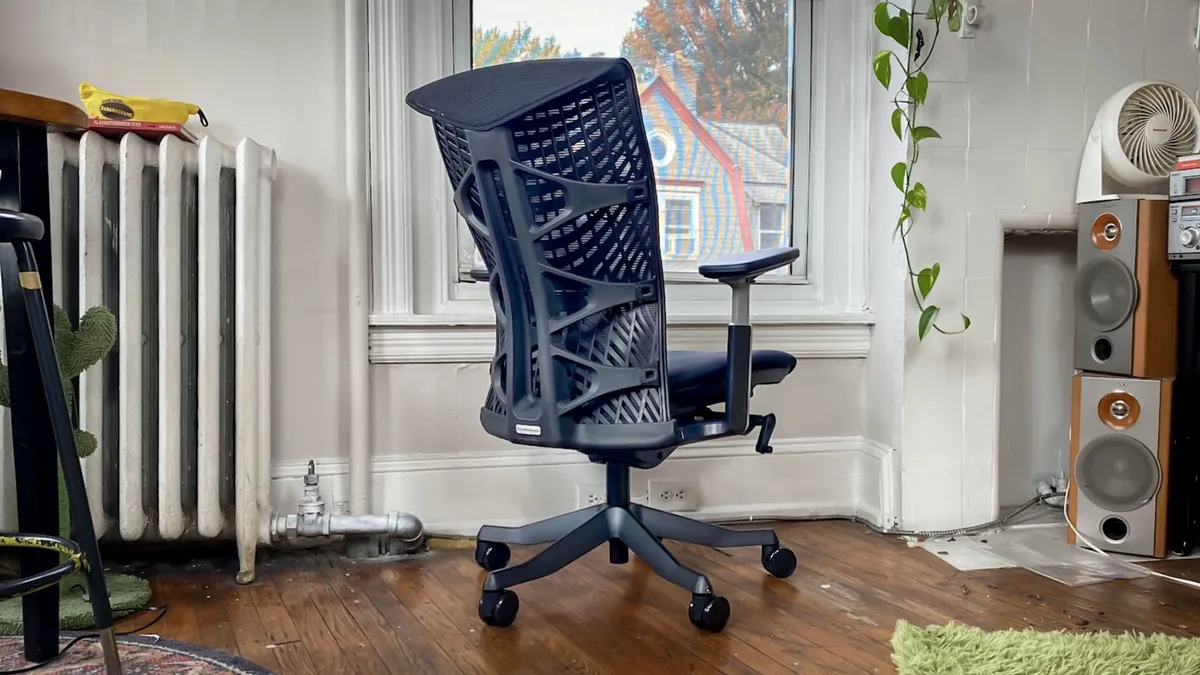
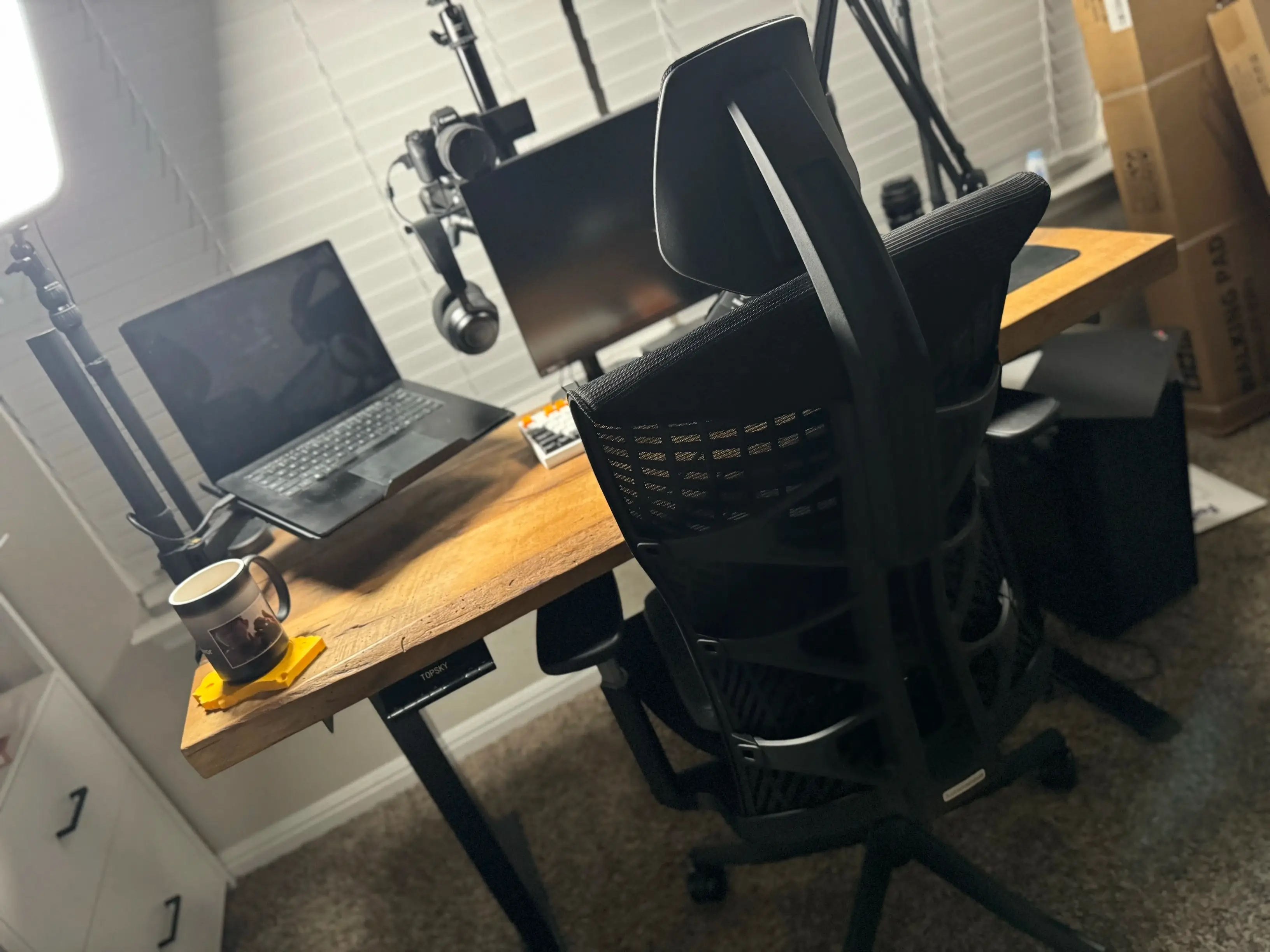
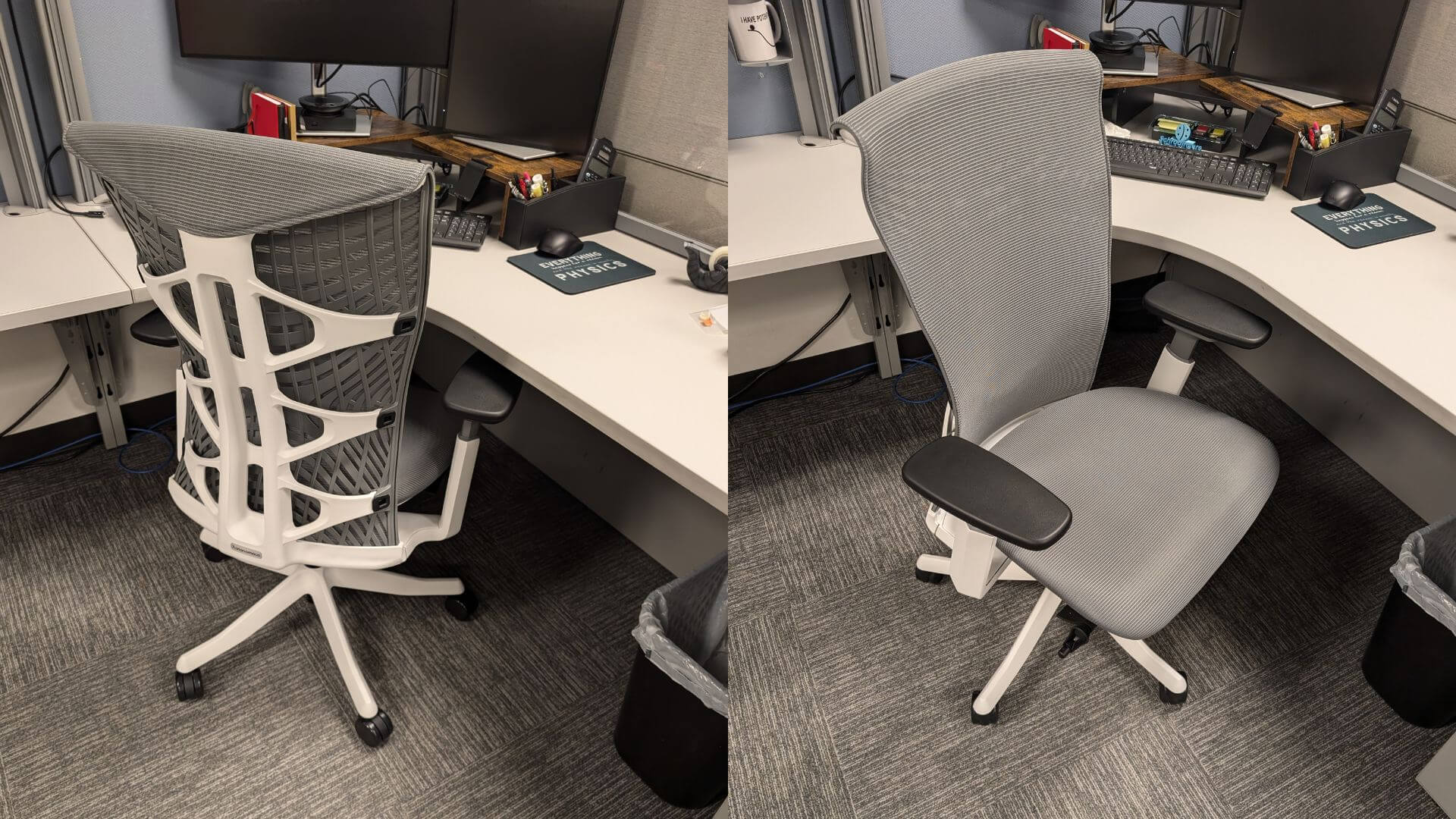
.jpg)
.jpg)
.jpg)


/https://storage.googleapis.com/s3-autonomous-upgrade-3/production/ecm/230914/bulk-order-sep-2023-720x1200-CTA-min.jpg)

/https://storage.googleapis.com/s3-autonomous-upgrade-3/production/ecm/230905/Untitleddesign.png)